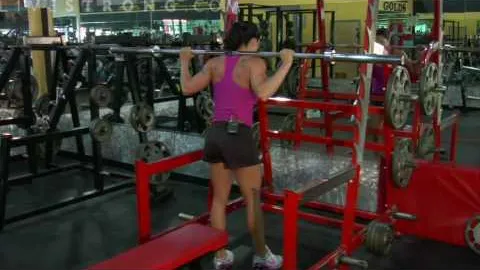

When it comes to strength training, few exercises are as effective and efficient as the barbell squat. Building both strength and muscle, this compound movement targets your legs, core, and back, making it a staple in any well-rounded workout routine.
One variation of the traditional barbell squat that deserves attention is the barbell squat to bench exercise. This variation adds an extra element of control and stability to the movement, making it suitable for beginners and advanced lifters alike. In this guide, we will dive into the specifics of the barbell squat to bench, discussing its benefits, proper form, and variations.
Controlled Range of Motion: By using the bench as a target for your squat, you can ensure you are hitting the desired depth consistently. This control allows you to focus on form and safely progress in weight.
Increased Quadriceps Activation: The barbell squat to bench places extra emphasis on the quadriceps muscles due to the pause at the bottom of the movement. This increased time under tension can lead to greater muscle growth and strength gains.
Core Stability: Balancing and stabilizing your body as you descend to the bench engages your core muscles, improving overall stability and strengthening your midsection.
Joint-Friendly: The barbell squat to bench reduces stress on the knees and lower back compared to the traditional squat. This makes it an excellent option for individuals with joint issues or those recovering from injuries.
To perform the barbell squat to bench correctly, follow these step-by-step instructions:
Setup: Begin by standing with your feet shoulder-width apart, toes slightly pointed outward. Position the barbell on your upper back, resting it on your traps. Grip the barbell wider than shoulder-width apart with an overhand grip.
Descent: Take a deep breath and brace your core. Initiate the movement by pushing your hips back and bending your knees slowly. Lower your body down with control, aiming to touch the bench lightly with your glutes while maintaining a neutral spine.
Pause: Once you reach the bench, pause for a second to ensure proper depth and control. This momentary pause allows you to maximize quadriceps activation.
Ascent: Begin the ascent by driving through your heels and pushing your hips forward. Keep your chest up, engaging your glutes and quadriceps muscles to stand back up to the starting position.
Tips for maintaining proper form during the barbell squat to bench:
Once you have mastered the basic barbell squat to bench, you can try these variations to add variety and challenge to your workouts:
Paused Reps: Increase the difficulty by adding a longer pause at the bottom of the squat, holding the position for two to three seconds before ascending.
Front Squat to Bench: Instead of placing the barbell on your upper back, hold it in front of your body, known as the front squat position. This variation puts more emphasis on your quadriceps and core muscles.
Narrow Stance Squat: Modify your foot position by bringing your feet closer together, focusing on the inner thigh and quadriceps engagement.
Barbell Bulgarian Split Squat: Elevate one foot on a bench or step behind you while performing the squat. This variation targets each leg individually, emphasizing unilateral strength and stability.
While the barbell squat to bench is generally safe when performed with proper technique, it is essential to consider the following safety precautions:
Start with lighter weights: If you are new to this exercise or have any concerns about your form or stability, begin with lower weights to ensure you can maintain control throughout the movement.
Progress gradually: Gradually increase the weight on the bar over time to prevent injury and allow your body to adapt to the increased load.
Listen to your body: If you experience pain or discomfort while performing the barbell squat to bench, stop immediately, and seek advice from a qualified fitness professional.
Warm-up properly: Before starting any strength training exercise, warm up your body with dynamic movements and stretches to increase blood flow and flexibility.
In conclusion, the barbell squat to bench is a fantastic exercise to incorporate into your workout routine, providing numerous benefits for building strength and muscle. By following proper form and gradually progressing in weight, you can safely reap the rewards of this compound movement. Remember to consult a fitness professional if you have any concerns or questions about your technique or training program. Happy squatting!
If you're looking for a gym, fitness club or yoga studio, you've come to the right place.
You can find information about gyms in your area. Browse catalog of gyms and find gyms with classes which are you looking for.
On gym page you can find simple information like address, phone or website. You can find list of available classes. You can check availability of personal training or small group classes. On place page you can also see information about open hours.
You can find gyms near you with amenities, courts, studios and equipments.
Use our map to find gym at your city or district.
In Gym Navigator you can find list of exercises with movies for many body parts.
You can browse exercises catalog and find exercises the best of you.
You can also find exercises grouped into workout plans, which you can use to improve you body. Each routine show you exercises one by one and give you possibility to count you progress and count down rest time.